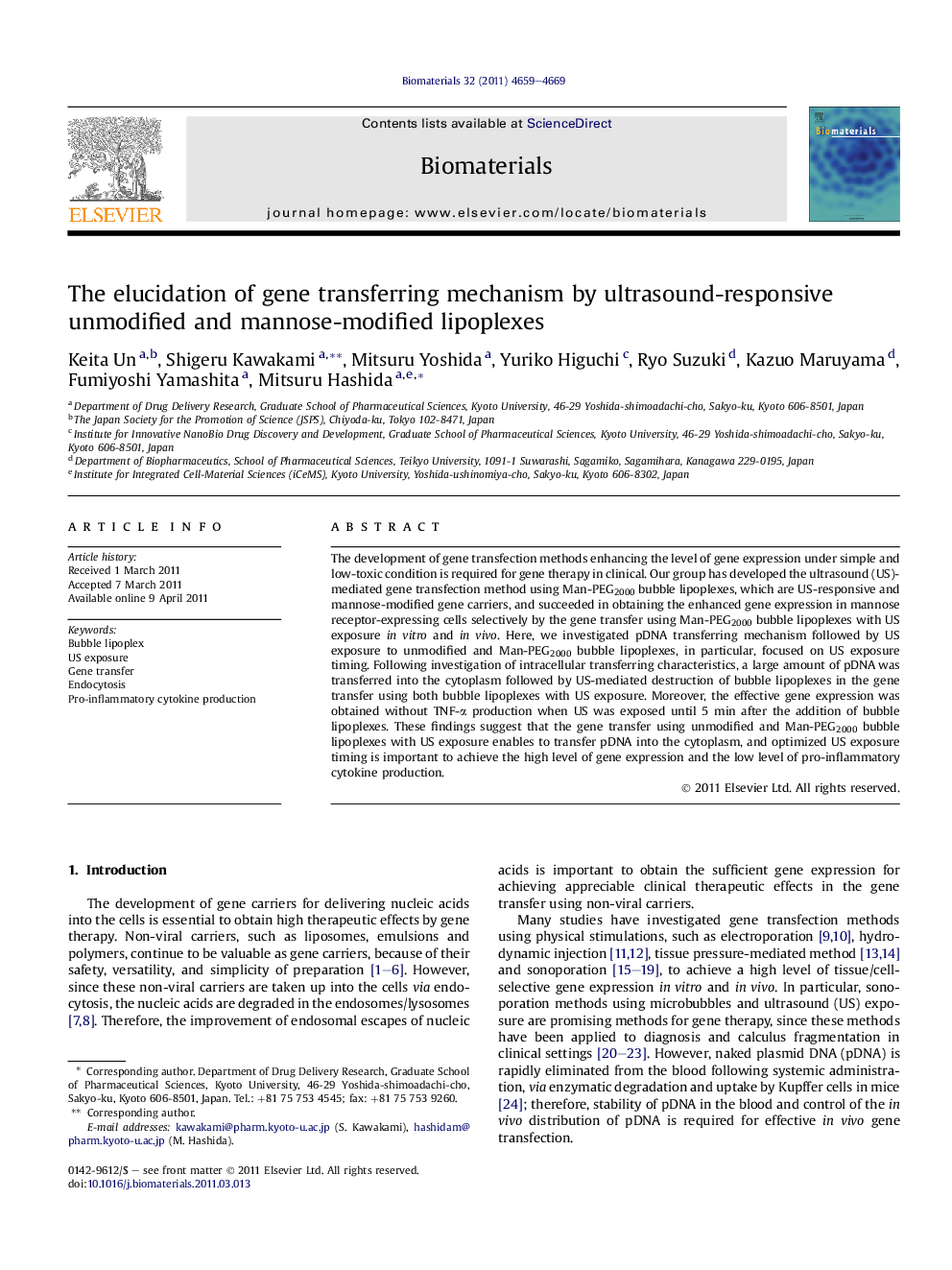| Article ID | Journal | Published Year | Pages | File Type |
|---|---|---|---|---|
| 7699 | Biomaterials | 2011 | 11 Pages |
The development of gene transfection methods enhancing the level of gene expression under simple and low-toxic condition is required for gene therapy in clinical. Our group has developed the ultrasound (US)-mediated gene transfection method using Man-PEG2000 bubble lipoplexes, which are US-responsive and mannose-modified gene carriers, and succeeded in obtaining the enhanced gene expression in mannose receptor-expressing cells selectively by the gene transfer using Man-PEG2000 bubble lipoplexes with US exposure in vitro and in vivo. Here, we investigated pDNA transferring mechanism followed by US exposure to unmodified and Man-PEG2000 bubble lipoplexes, in particular, focused on US exposure timing. Following investigation of intracellular transferring characteristics, a large amount of pDNA was transferred into the cytoplasm followed by US-mediated destruction of bubble lipoplexes in the gene transfer using both bubble lipoplexes with US exposure. Moreover, the effective gene expression was obtained without TNF-α production when US was exposed until 5 min after the addition of bubble lipoplexes. These findings suggest that the gene transfer using unmodified and Man-PEG2000 bubble lipoplexes with US exposure enables to transfer pDNA into the cytoplasm, and optimized US exposure timing is important to achieve the high level of gene expression and the low level of pro-inflammatory cytokine production.
